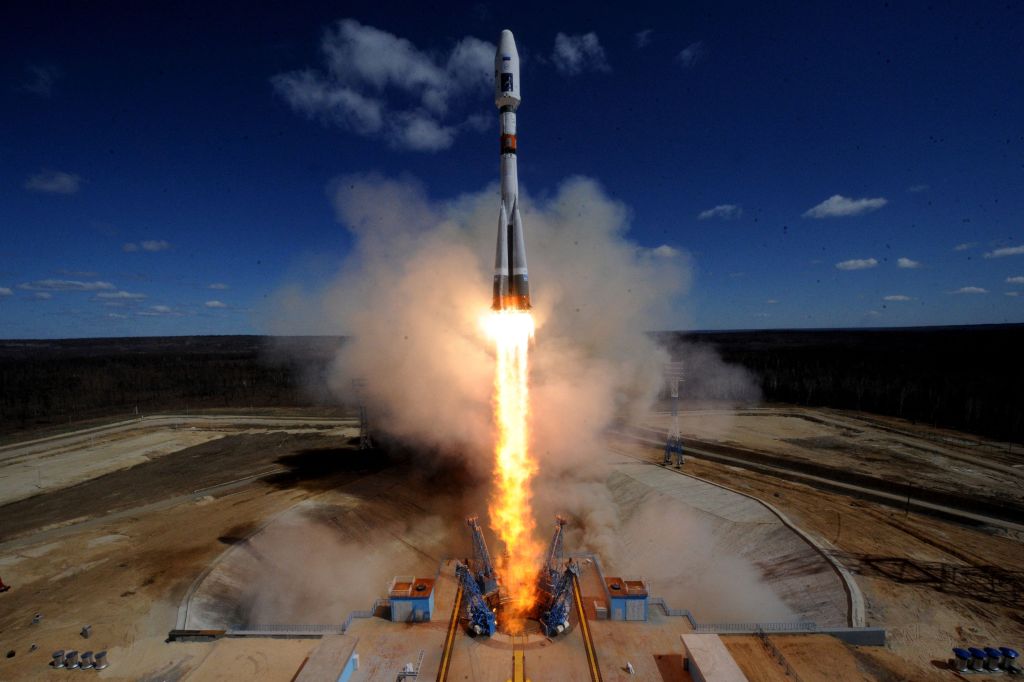Humans have tried to nuke and colonize the moon. We’ve spilled tardigrades all over it. In 2020, of all years, some TikTok witches hexxed it. For a celestial body that’s main job is to control the ocean’s tides and be barren, the moon has been through a lot.
If that wasn’t enough, scientists are now talking about sending a bunch of splooge to the moon.
Videos by VICE
At the annual Institute of Electrical and Electronics Engineers (IEEE) Aerospace Conference on Saturday, a team from the University of Arizona presented a report titled “Lunar Pits and Lava Tubes for a Modern Ark.” This sounds very official and sterile, but the bottom line of their proposal is that they want to build a sperm bank under the dusty regolith of the lunar surface, for safekeeping.

This “insurance policy” for the future of humanity and all of Earth’s species would be a repository of reproductive cells, including sperm and eggs. They propose that the bank could act as an ark, like the seed vault in Svalbard now, in case of catastrophe.
Space-based sperm banks aren’t a new concept: In 2019, scientists proposed that all-woman astronaut crews on long-term missions where they needed to populate new planets could be sent on their way with sperm banks in tow. In that study, they sent up sperm from 10 Earthling donors, and the swimmers held up as well after their ride in space as they would have if they’d remained on the ground.
The University of Arizona team’s plans for a celestial sperm and egg locker involves storing the cells inside of lunar pits. The moon is pock-marked with 200 of these pits, which are 80 to 100 meters deep, where lava used to flow on the moon. They can protect against dramatic temperature changes, asteroids, or radiation. NASA has previously said that these pits could serve as useful little shelters for visiting astronauts—or, I guess in this case, cum holes. That’s the circle of life.
As part of his presentation, Thanga outlined some of the fun use-cases for putting this sort of fertility program off-Earth, including a “super volcanic eruption,” asteroid, nuclear war, and global epidemic.

In the lava pits, the sperms and eggs would be cryogenically frozen until needed, like if Earth’s entire living population was decimated by one of the above disasters, for example. Elevator shafts could be installed in the pits for retrieval and testing. “We can still save them until the tech advances to then reintroduce these species — in other words, save them for another day,” the study’s lead author Jekan Thanga said.
Since the freezers will be too cold for humans, however, they’ll also need robots to navigate within the tubes—but metal robots could freeze and jam up. For that, the team suggests developing robots that move around using quantum levitation, that would allow them to maneuver through the delicate, cold arks without touching the ground.
In the last 50 years, Earth has lost two-thirds of its wildlife population due to climate change, with extreme drought conditions and massive wildfires, and we’ve already faced years of varying degrees of looming threats of nuclear war. We’re in the middle of a global pandemic. It goes without saying that some of these doomsday scenarios are looking pretty convincing at this point. Thanga calls an off-planet ark a “modern insurance policy” against the wild unpredictability of our home planet.
The presentation didn’t go over who will get to donate, or whether they’ll be looking for donors to subject their sperm and eggs to a space trip. But one day, we could look up at the heavens, gaze upon the moon hanging in the night sky, and say, there’s cum up there.





